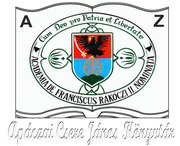Please use this identifier to cite or link to this item:
https://dspace.kmf.uz.ua/jspui/handle/123456789/4633Full metadata record
| DC Field | Value | Language |
|---|---|---|
| dc.contributor.author | Hadeer Q. Waleed | en |
| dc.contributor.author | Csécsi Marcell | hu |
| dc.contributor.author | Rachid Hadjadj | en |
| dc.contributor.author | Ravikumar Thangaraj | en |
| dc.contributor.author | Pecsmány Dániel | hu |
| dc.contributor.author | Michael Owen | en |
| dc.contributor.author | Szőri Milán | hu |
| dc.contributor.author | Fejes Zsolt | hu |
| dc.contributor.author | Viskolcz Béla | hu |
| dc.contributor.author | Fiser Béla | hu |
| dc.contributor.author | Bela Fiser | en |
| dc.contributor.author | Фішер Бейло | uk |
| dc.date.accessioned | 2025-01-29T10:24:57Z | - |
| dc.date.available | 2025-01-29T10:24:57Z | - |
| dc.date.issued | 2022 | - |
| dc.identifier.citation | In Polymers. 2022. Volume 14., Issue 1. 11 p. | en |
| dc.identifier.issn | 2073-4360 (Online) | - |
| dc.identifier.other | DOI: https://doi.org/10.3390/polym14010008 | - |
| dc.identifier.uri | https://dspace.kmf.uz.ua/jspui/handle/123456789/4633 | - |
| dc.description.abstract | Abstract. Polyurethanes (PUs) are widely used in different applications, and thus various synthetic procedures including one or more catalysts are applied to prepare them. For PU foams, the most important catalysts are nitrogen-containing compounds. Therefore, in this work, the catalytic effect of eight different nitrogen-containing catalysts on urethane formation will be examined. The reactions of phenyl isocyanate (PhNCO) and methanol without and in the presence of catalysts have been studied and discussed using the G3MP2BHandHLYP composite method. The solvent effects have also been considered by applying the SMD implicit solvent model. A general urethane formation mechanism has been proposed without and in the presence of the studied catalysts. The proton affinities (PA) were also examined. The barrier height of the reaction significantly decreased (∆E0 > 100 kJ/mol) in the presence of the studied catalysts, which proves the important effect they have on urethane formation. The achieved results can be applied in catalyst design and development in the near future. | en |
| dc.description.sponsorship | This research is supported by the European Union and the Hungarian State, co-financed by the European Regional Development Fund in the framework of the GINOP-2.3.4-15-2016-00004 project, which aims to promote cooperation between higher education and industry. Further support has been provided by the National Research, Development and Innovation Fund (Hungary) within the TKP2021-NVA-14 project. | en |
| dc.language.iso | en | en |
| dc.publisher | MDPI | en |
| dc.relation.ispartofseries | ;Volume 14., Issue 1. | - |
| dc.rights | Attribution-NonCommercial-NoDerivs 3.0 United States | * |
| dc.rights.uri | http://creativecommons.org/licenses/by-nc-nd/3.0/us/ | * |
| dc.subject | catalysts | en |
| dc.subject | urethane formation | en |
| dc.subject | catalyst-free | en |
| dc.subject | DFT | en |
| dc.subject | proton affinities | en |
| dc.subject | composite method | en |
| dc.title | Computational Study of Catalytic Urethane Formation | en |
| dc.type | dc.type.collaborative | en |
| Appears in Collections: | Fiser Béla | |
Files in This Item:
| File | Description | Size | Format | |
|---|---|---|---|---|
| Fiser_Computational_Study_Catalytic_2022.pdf | In Polymers. 2022. Volume 14., Issue 1. 11 p. | 7.96 MB | Adobe PDF | View/Open |
This item is licensed under a Creative Commons License





